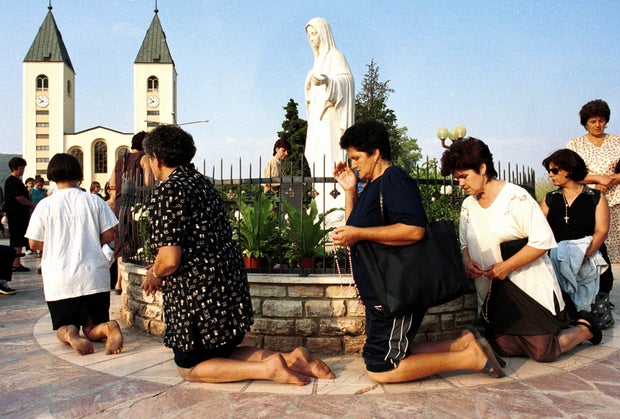Vatican CITY – The Vatican’s doctrinal office released new rules regarding alleged supernatural phenomena, such as apparitions of Mary, weeping statues and other supposed mystical events.
For centuries, apparitions of Mary in places such as Fátima, Portugal and Lourdes, France – eventually declared by ecclesiastical authorities to be of divine origin – became the basis for shrines visited by millions of pilgrims every year.
But in a new document replacing the 1978 church rules, the Dicastery for the Doctrine of the Faith (DDF) declared that the Vatican and the local bishop will no longer formally declare that such phenomena are of divine origin. The head of the DDF, Cardinal Victor Manuel Fernandez, said at a news conference on Friday introducing the new norms that the Vatican would no longer assert “with moral certainty that (such phenomena) originate from a decision willed by God to direct way”. Instead, after careful consideration, they would limit themselves to authorizing devotion and pilgrimages, he said.
The new rules give the Vatican the final say, requiring the bishop to conduct an investigation, formulate his decision and submit it to the DDF. The DDF will then respond with one of six possible outcomes. They range from a “nihil obstat” (“nothing prevents”) that allows the bishop to promote phenomena and invite devotion and pilgrimage; proceed with caution, as some doctrinal issues are still open; advise the bishop not to encourage the phenomena; to declare based on concrete facts that phenomena do not have a divine origin.
Hidajet Delic/AP
Fernandez said that since the examination of alleged religious phenomena took many years, these new rules would help the Church make decisions much more quickly, which is essential in the Internet age where such allegations spread very quickly.
In most cases, these apparitions led to a growth in faith, leading to shrines that are at the center of popular devotion, he said. But the cardinal also warned that they could lead to “serious problems that harm the faithful” and could be exploited for “profit, power, fame, social recognition or other personal interests.” Believers can be “misled by an event attributed to divine initiative but which is merely a product of someone’s imagination, desire for novelty or tendency to lie,” he said.
Neomi De Anda, executive director of the International Marian Research Institute at the University of Dayton, told the Associated Press that the new guidelines represent a significant but welcome change in current practice while reaffirming important principles.
“The faithful are able to engage with these phenomena as members of the faithful in popular religious practices, although they do not feel the need to believe everything that is offered to them as supernatural, as well as caution against being deceived and deceived,” he said. her in a statement. email.
























